We collect the shield in the apartment and house on our own
An electrical panel in a private house, in a country house, in an apartment performs a double function: it provides input and distribution of electricity and creates safe operating conditions. If there is a desire to understand a not very simple issue, you can assemble an electrical panel with your own hands. The introductory machine and the meter should be installed by representatives of the power supply organization, but further, after the meter, you can assemble the circuit yourself (although they do not like to lose money). True, before putting the house into operation, you will need to invite them so that they are present at start-up, they check everything and measure the ground loop. All of these are paid services, but they cost much less than a complete shield assembly. If you do everything correctly and according to the norms, it will turn out even better on your own: after all, you do it for yourself.
The content of the article
What should be in the dashboard
Both in the apartment and in a private house there are several options for the layout of the shield. This mainly concerns the installation site of the input machine and meter. In a private house, they can put a meter on a pole, and an automatic machine on the wall of the house, almost under the roof. Sometimes a meter is installed in the house, but that is if it was built a couple of decades ago. Recently, metering devices have been installed extremely rarely in the house, although there are no decisions and instructions on this matter. If the meter is in a room, it can be installed in a flap, then when choosing a flap model, it is necessary to take into account the dimensions of the meter.
About,how to connect electricity from the pole to the house, read here.
In some apartment buildings, meters are located in boxes on the stairwells. In this case, the cabinet is needed only for RCDs and automatic machines. In other houses, he is in the apartment. When upgrading the electrical network, the cabinet will have to be bought so that the meter fits there too, or buy a separate box for the meter with an introductory machine.
Safety is very important when drawing up a power plan. First of all, it is provided for people: with the help of an RCD - a residual current device (in the photo under number 3), which is installed immediately after the meter. This device is triggered if the leakage current exceeds the threshold value (there was a short to ground or someone put their fingers in the socket). This device breaks the circuit, minimizing the possibility of electric shock. From the RCD, the phase enters the inputs of the machines, which also operate when the load is exceeded or when the circuit is short-circuited, but each in its own section.
Secondly, it is necessary to ensure the normal operation of household appliances and electrical appliances. Modern sophisticated technology is controlled by microprocessors. They need a stable power supply to function properly. After observing the voltage in our network for some time, it cannot be called stable: it varies from 150-160 V to 280 V. Such a spread of imported equipment cannot withstand. Therefore, at least some groups of machines that supply power to complex equipment, it is better to turn on through stabilizer... Yes, it costs a lot. But when there are power surges, the control boards are the first to "fly". They are not being repaired here, but simply changed. The cost of such a replacement is about half the cost of the device (more or less depends on the type of device). It's hardly cheaper. When assembling an electrical panel with your own hands, or just planning it while planning, remember this.
The stabilizer is installed on one or several groups and turns on after the RCD and in front of the group machines.Since this device is rather big, it will not work to install it in the shield, but next to it - please.
Also, two buses are installed in the shield: grounding and zeroing. All grounding wires from devices and devices are connected to the grounding bus. The wire comes to the "zero" bus from the RCD, and is fed to the corresponding inputs of the machines. Zero is usually denoted by the letter N, when wiring it is customary to use a blue wire. For grounding - white or yellow-green, the phase is lead with a red or brown wire.
When assembling the electrical panel on your own, you will need to purchase the cabinet itself, as well as rails (called DIN rails or DIN rails), on which machines, RCDs and switches are attached. When installing the rails, check the level of their horizontalness: there will be no problems with the fastening of the machines.
All machines must be interconnected. This can be done using conductors - connecting their inputs in series, or using a ready-made connecting comb. A comb is more reliable, although it costs more, but if you take into account the time that you spend on connecting all the machines, it is unlikely that a few tens of rubles are of such fundamental importance.

Connecting comb for circuit breakers in the electrical panel: will speed up the process of self-assembly
Multi-group scheme
Power supply schemes are not always simple: consumer groups are divided into floors, outbuildings, lighting of the garage, basement, courtyard and local area are displayed separately. With a large number of consumers, in addition to the general RCD after the meter, they put the same devices, only of lower power - for each group. Separately, with the obligatory installation of a personal protective device, the power supply for the bathroom is output: this is one of the most dangerous rooms in the house and apartment.
It is very desirable to put protective devices on each of the inputs that go to powerful household appliances (more than 2.5 kW, and even a hairdryer may have such power). Together with the stabilizer, they will create normal conditions for the operation of electronics.
In general, when designing an accurate circuit, you will have to find a compromise: make the system safe and not spend too much money. It is better to take equipment from trusted companies, but it costs decently. But power grids are not an area to save money.
how connect an electric hob read here, but about connecting an electric water heater (storage or instantaneous) read this article.
Types and sizes of switchboards
It will be about cabinets / boxes for the installation of machines and other electrical filling, about their varieties. By the type of installation, electrical panels are for outdoor installation and for indoor installation. The outdoor box is fixed to the wall with dowels. If the walls are flammable, a non-conductive insulating material is placed under it. When mounted, the external switchboard protrudes above the wall surface by about 12-18 cm. This must be taken into account when choosing a place for its installation: for ease of maintenance, the shield is mounted so that all its parts are approximately at eye level. It is convenient for work, but it can threaten with injuries (sharp corners) if the location for the cabinet is not chosen well. The best option is behind the door or closer to the corner: so that there is no possibility of hitting your head.
A flush-mounted shield implies a niche: it is installed and walled up. The door is flush with the wall surface, maybe - it protrudes a few millimeters - depending on the installation and design of a particular cabinet.
There are metal cases, painted with powder paint, and there are plastic ones. Doors - solid or with transparent plastic inserts. Sizes are different - elongated upward, wide, square. In principle, a suitable option can be found for any niche or condition.One tip: if possible, choose a larger cabinet: it is easier to work in it, this is especially important if you are assembling an electrical panel with your own hands for the first time.
When choosing a case, they often operate with such a concept as the number of seats. This means how many single-pole circuit breakers (12 mm thick) can be installed in a given housing. You have a diagram, it shows all the devices. Consider them taking into account the fact that the two-pole ones have a double width, add about 20% to the development of the network (suddenly buy some other device, but there will be nowhere to connect, or during installation decide to make two from one group, etc.). And for such a number of "seats" look for a flap suitable for geometry.
Installation and connection of elements
All modern automatic machines and RCDs have a unified mount for a standard mounting rail (DIN rail). On the back side they have a plastic stop that snaps into place on the bar. Place the device on the rail, hooking it with the recess on the back wall, press on the bottom with your finger. After clicking, the item is set. It remains to connect it. They do it according to the scheme. The corresponding wires are inserted into the terminals and with a screwdriver they tighten the contact, tightening the screw. It is not necessary to tighten it too much - you can pass the wire.
They work when the power is off, all switches are switched to the “off” position. Try do not handle the wires with both hands... Having connected several elements, turn on the power (input breaker), then turn on the installed elements in turn, checking them for a short circuit (short circuit).
The phase from the input is fed to the input machine, from its output it goes to the corresponding input of the RCD (put a jumper with a copper wire of the selected section). In some schemes, the neutral wire from the water is fed directly to the corresponding input of the RCD, and from its output it goes to the bus. The phase wire from the output of the protective device is connected to the connecting manifold of the machines.
In modern schemesthe input machine is two-pole: he must simultaneously disconnect both wires (phase and zero) in order to completely de-energize the network in case of a malfunction: this is safer and these are the latest requirements for electrical safety. Then the circuit for switching on the RCD looks like in the photo below.
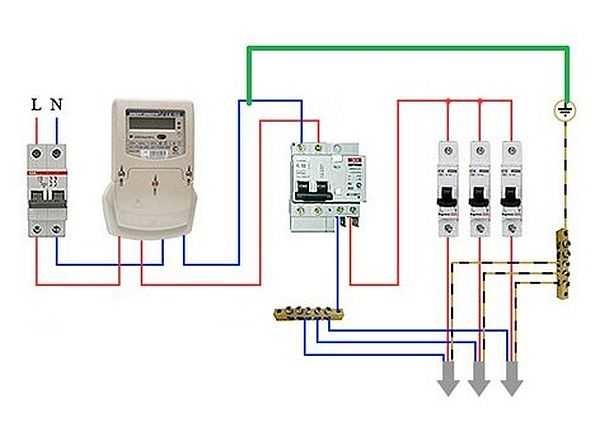
When using a two-pole input circuit breaker
Watch the video about installing an RCD on a DIN rail.
In any circuit, the wire protective earth connects to its own bus, where similar conductors from electrical appliances are connected. Grounding is a sign of a safe network and it is vital to do so. Literally.
For information on how to properly connect an RCD, see the video tutorial.
When assembling the panel yourself, please note that the input machine and the meter will be sealed by the energy supplying organization. If the meter has a special screw on which the seal is attached, then the input machine does not have such devices. If it is not possible to seal it, you will either be refused start-up, or the entire shield will be completely sealed. Therefore, a box is placed inside the common shield for one or two places (depending on the size and type of the machine), and the input machine is attached to it. This box is sealed upon acceptance.
Individual machines are installed on the rails exactly like an RCD: they are pressed against the rail until they click. Depending on the type of machine (one or two poles - wires), the corresponding wires are connected to them. What machines are there, and what is the difference between devices for one and three-phase networks, see the video, the choice of the value of the circuit breaker is described here.
After the required number of devices are installed on the mounting rail, their inputs are connected. As said earlier, this can be done with wire jumpers or a special connecting comb. See the photo for how the wire connection looks.
There are two ways to make jumpers:
- Cut the conductors of the required lengths, expose their edges and bend them in an arc. Insert two conductors into one terminal, then tighten.
- Take a sufficiently long conductor, strip 1-1.5 cm of insulation after 4-5 cm. Take round-nose pliers and bend the bare conductors so that you get interconnected arcs. Insert these bare areas into the corresponding slots and tighten.
They do this, but electricians talk about the poor quality of the connection. It is safer to use special tires. There are special connectors under them on the case (narrow slots, closer to the front edge), into which the bus contacts are inserted. These tires are sold by the meter, cut into pieces of the required length with conventional wire cutters. After inserting it and installing the supply conductor in the first of the machines, tighten the contacts on all connected devices. Watch the video on how to connect the machines in the dashboard using a bus.
A phase wire is connected to the output of the machines, which goes to the load: to household appliances, to sockets, switches, etc. Actually, the assembly of the shield is complete.
The choice of machines in the house or apartment panel
Three types of devices are used in the electrical panel:
- Machine. Disconnects and enables the power in manual mode, and also operates (breaks the circuit) in the event of a short circuit in the circuit.
- RCD (residual current device). It monitors the leakage current that occurs when insulation breaks down or if someone grabs the wires. When one of these situations occurs, the chain is broken.
- Dif. machine (differential automaton). This is a device that combines two in one case: it controls the presence of a short circuit and a leakage current.
Differential machines are usually put instead of a bundle - RCD + machine. This saves space in the panel - less space is required by one module. Sometimes this is important: for example, you need to turn on another power line, and there is no place for installation, and there is no free machine.
In general, two devices are often installed. Firstly, it is cheaper (diff.automatic devices are more expensive), and secondly, when one of the protective devices is triggered, you know exactly what happened and what you need to look for: short circuit (if the machine was turned off) or a leak and possible overcurrent (it worked RCD). When the difavtomat is triggered, you will not find this. Unless you put a special model, which has a checkbox showing which malfunction the device has triggered.
Automatic circuit breakers
Circuit breakers selectable by current, which is necessary for consumers of this group. It is calculated simply. Add up the maximum powers of all devices connected at the same time in the group, divide by the mains voltage - 220 V, you get the required current power. You take the rating of the device a little more, otherwise when all loads are turned on, it will turn off due to overload.
For example, adding up the power of all devices in the group, we get a total value of 6.5 kW (6500 W). Divide by 220 V, we get 6500 W / 220 V = 29.54 A.
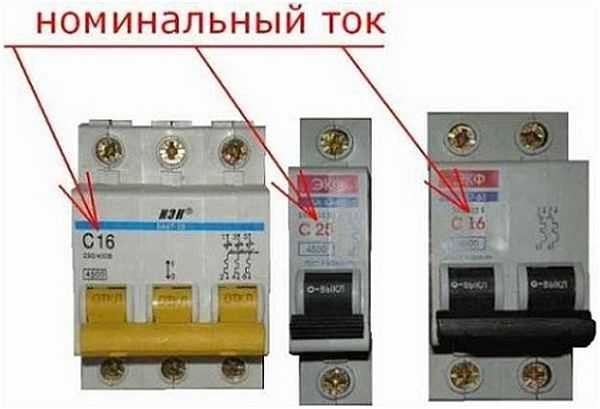
What numbers on the case mean what
The ratings of the machines for current can be as follows: (in A) 6, 10, 16, 20, 25, 32, 40, 50, 63. The closest larger to the given value is 32 A. We are looking for this.
Types and types of RCDs
RCDs have two types of action: electronic and electronic-mechanical... The difference in price for a device with the same parameters is large - electronic-mechanical ones are more expensive. But you need to purchase them for a dashboard in a house or apartment. There is only one reason: they are more reliable, since they work regardless of the presence of power, and for the operation of electronic ones, power is required.
For example, the situation is this: you are repairing the wiring, for example, an outlet and disconnected the network for this - you turned off the input machine. In the process, insulation was damaged somewhere. If an electro-mechanical RCD is installed, it will work even if there is no power supply. You will understand that you did something wrong and you will look for the reason. Electronic without power is inoperative and turning on the network with damaged insulation may have problems.
To understand which of the devices is in front of you, it is enough to have a small battery and a couple of wires at hand. Apply battery power to any pair of RCD contacts. The electro-mechanical will work, the electronic will not. More on this in the video.
Further, RCDs are distinguished by the type of current, to the changes of which they react:
- AC type - alternating sinusoidal current;
- type A - alternating current + pulsating direct current;
- type B - AC + pulsating DC + rectified current.
Turns out that type B gives the most complete protectionbut these devices are very expensive. For a house or apartment panel, completely enough, type Abut not AC, which are mostly sold as they are cheaper.
Besides the type RCD, it is selected by current. Moreover, according to two parameters: rated and leakage... A nominal is one that can go through the contacts and not destroy (fuse) them. The rated current of the RCD is taken one step higher than the rated current of the machine installed in tandem with it. If the machine is needed for 25 A, then take the RCD for 40 A.
The leakage current is still simpler: only two ratings are put in electrical distribution boards for an apartment and a house - 10 mA and 30 mA. 10 mA is put on a line with one device, for example, a gas boiler, a washing machine, etc. as well as in rooms where a high degree of protection is required: in a nursery or a bathroom. Accordingly, a 30 milliampere RCD is installed in lines that include several consumers (devices) - on sockets in the kitchen, rooms. On the lighting line, such protection is rarely installed: there is no need, except for the street or in the garage.
RCDs also have different response delays. They are of two types:
- S - selective - trips after a certain time after the appearance of the leakage current (quite a long period of time). They are usually placed at the entrance. Then, in the event of an emergency, the device on the damaged line is turned off first. If the leakage current remains, then the "senior" selective RCD will operate - usually the one at the input.
- J - also triggers with a delay (protection against accidental currents), but with much less. This type of RCD is placed in groups.
Dif-machines are of the same types as RCD and are selected in the same way. Only when determining the power by current, you immediately consider the load and determine the rating.
For a few explanations on the installation of a built-in cabinet for the dashboard, see the connection procedure in the video from a practitioner and a wide-profile specialist.
One important detail that is important for safety. There is a "test" button on the RCD or differential machine. When it is pressed, a leakage current is artificially created and the device must work - the switch goes into the "off" position and the line is de-energized. This is how the performance is checked. This should be done at least once a month: to be sure of the reliability of protection. Check all the RCDs in the circuit one by one. It is important.
Probably, this is all the information that is needed to assemble an electrical panel with your own hands. Maybe you still need to learn more about how to break the load into groups, about this read here.

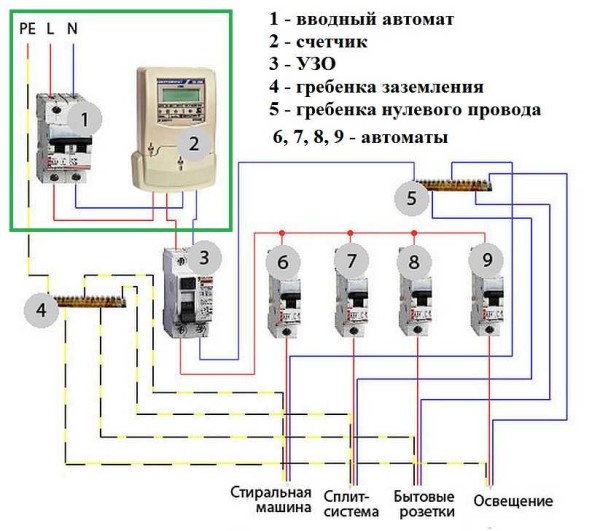
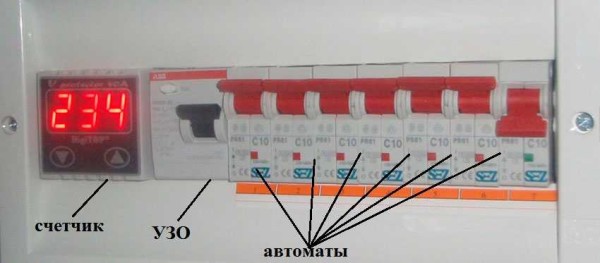
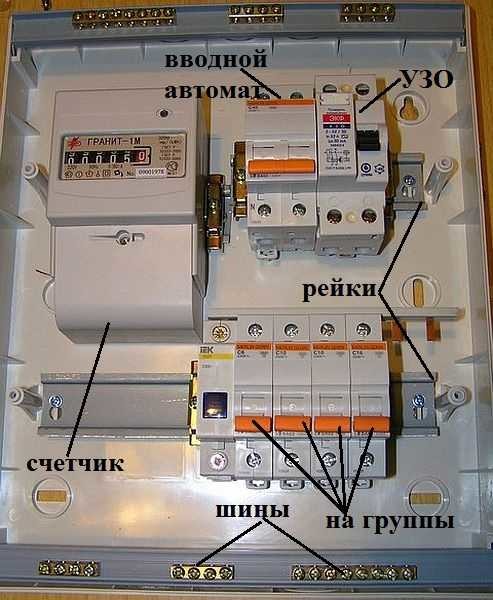
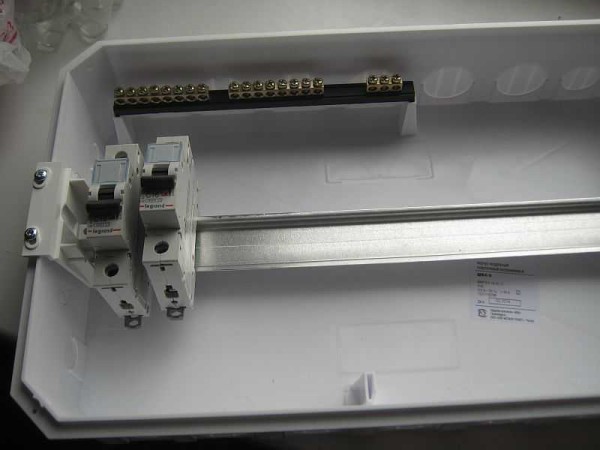
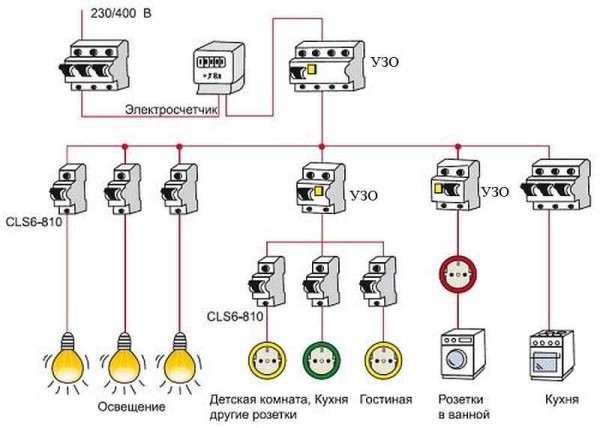
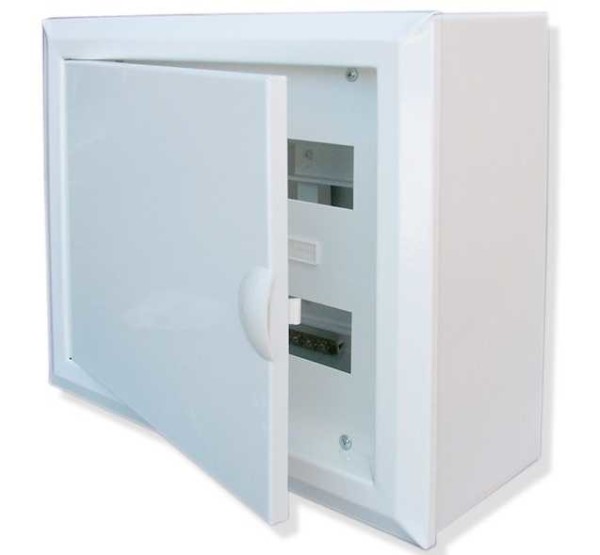
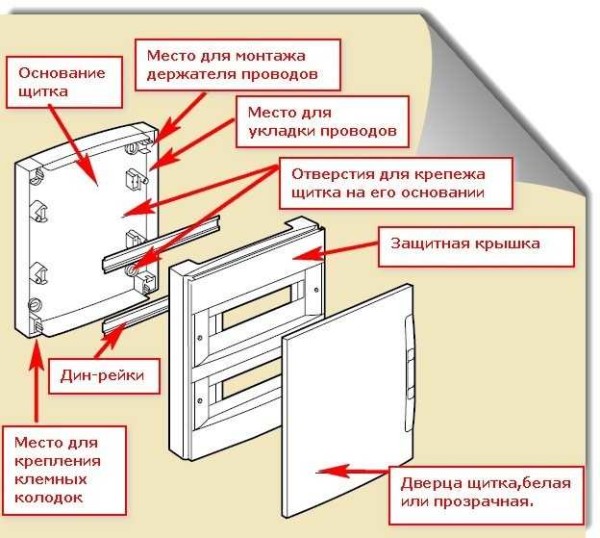
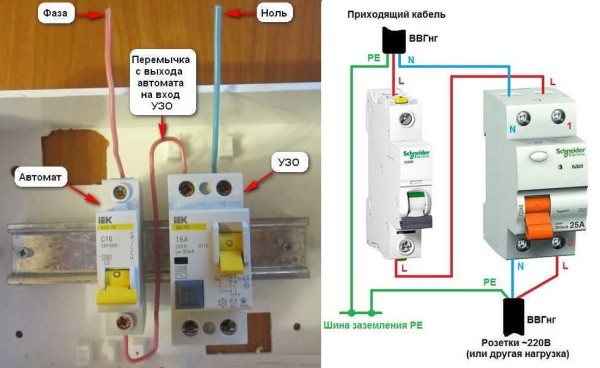
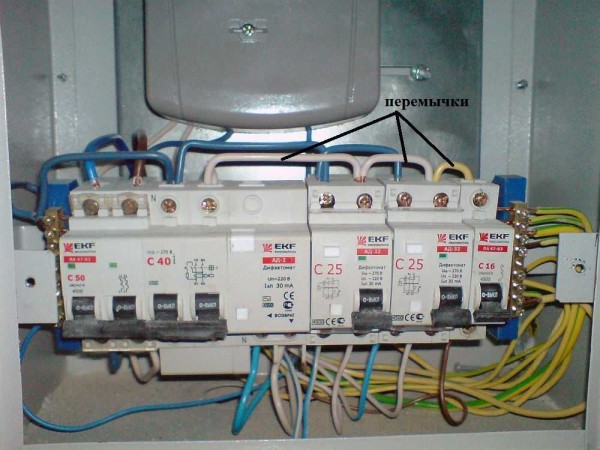
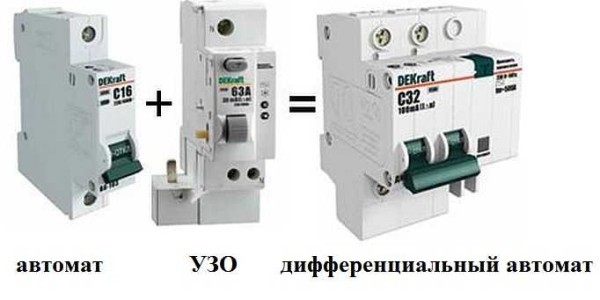
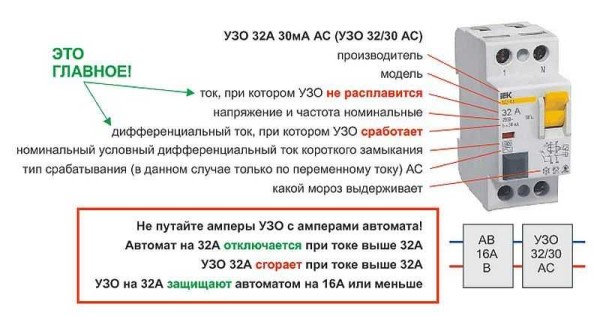
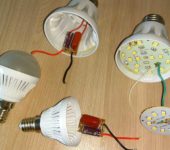

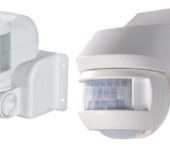
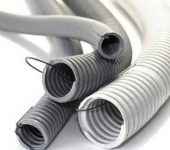
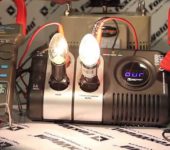





Thank you. Everything is clear and intelligible. Written in simple and accessible language.
You are welcome. We try))
fine!!!!!!!! the first grader will understand the article.
Great article! There were doubts whether I would be able to connect a new kitchen and bathroom in a private house or call an electrician. Now I am sure that you can do everything yourself. Everything is described simply and accessible. Thank you very much!!!
We try. Thank you too.
Thanks for the article, but there was one question). Should the ground and zero be closed or not?
No. Earth and zero are not closed. This is impossible and threatens with serious consequences.
In the 90s, he worked as an electrician at a state farm - they always "hung on one bolt" the earth and zero. Nowadays, when using devices such as RCDs, such a trick will not even work.
hello, such a question ... there is an old house, I have recently built a new one and I want to power it from the old one, how to connect and what machines are needed. The input machine in the old house is C63. The new house will also have heaters, water heaters, etc. Please tell me how to connect ...
Leave the old electricity? Will electrical appliances (powerful) work simultaneously in both the old and the new? If so, the machine should be set with a lower value. How much less? Depends on the distribution of the load in the old / new house, but not less than a step exactly. More precisely, according to the description, it will not work. Sami calculate the load on the new home and think about what kind of machine you need there.
I would like to clarify with the installation of an "introductory machine" - in my case, we are talking about the installation of an in-house electrical panel: in my Stalinist house on the landing for 3 apartments, three machines are installed in the panel, one of which de-energizes my apartment. According to your instructions, the dashboard should contain an introductory machine connected to the network in front of the meter, but I already have such a "completely disconnecting the network" device installed in the dashboard on the staircase, and, at the same time, a special place for sealing the input machine in the apartment panel intended for installation for internal installation is not provided. Do I need, in this case, on the basis of regulatory requirements, in addition to the apartment machine on the staircase, another sealed "input machine" installed in front of the meter in the apartment panel, or can I put a two-pole machine after the meter for a summary shutdown of all group machines for my own convenience? ?
This device (RCD) is triggered if the leakage current exceeds a threshold value (there was a short to ground or someone put their fingers into the socket). This device breaks the circuit, minimizing the possibility of electric shock. From the RCD, the phase enters the inputs of the machines, which also operate when the load is exceeded or when the circuit is short-circuited, but each in its own section.
I think that the machines simply duplicate the RCD function, so nothing terrible will happen if the shield is installed without an RCD.
It will not happen if the machine is triggered on time. They are chosen with a long time delay - so that the light does not turn off during instantaneous overloads (starting currents, for example). In simple circuits, this is permissible - when there is one two-socket and a light bulb. Otherwise, the delay will be too long. When touching live parts, the consequences will be grave ...
The machines do not duplicate the functions of the RCD; for the machine, a person sticking his fingers into the outlet is simply a load connected to the network. If the current does not exceed a certain threshold, the machine will not work.
Tell me, in which program can you draw the diagram, which is at the very beginning of the article? where to get the base of images of components?
it is not indicated in the article that when connecting several RCDs, it is necessary for each of them to provide its own zero bus. the total number of zero buses will exceed the number of applied ouzo by 1 (provided that 2 or more RCDs are used). For example, we put three ouzo - then you need four zero buses - one "main" to which zeros of each used ouzo will flock and three "daughters" - zero buses to which zero will come from consumers of each spaced group.
when connecting all ouzo to one zero bus, correct operation cannot be achieved
well, or as an option, instead of the "mother" zero bus, distribute zero to all ouzo using jumpers.
Good day! I want to assemble a separate panel on the 2nd floor, 3 sockets and one switch will be connected. The lead-in cable will start from the flap of the first floor, with grounding, please tell me the basic connection diagram and which machines to connect, whether it is necessary to install an RCD or it is better to install a differential machine.
It is not clear whether the cable that comes from the first floor is connected after the general RCD or not? If not, then leakage protection is needed for your own safety. As I understand it, there will be only one room on the second floor with one chandelier and three sockets? If the cable does not come through an RCD and there is no particular desire to bother, you can put one 16 amp difavtomat.